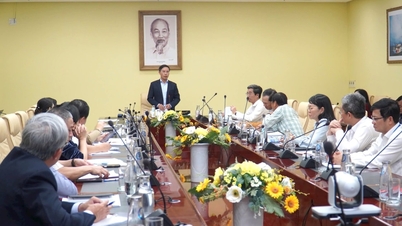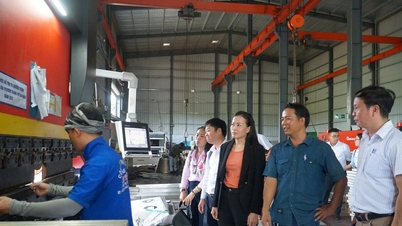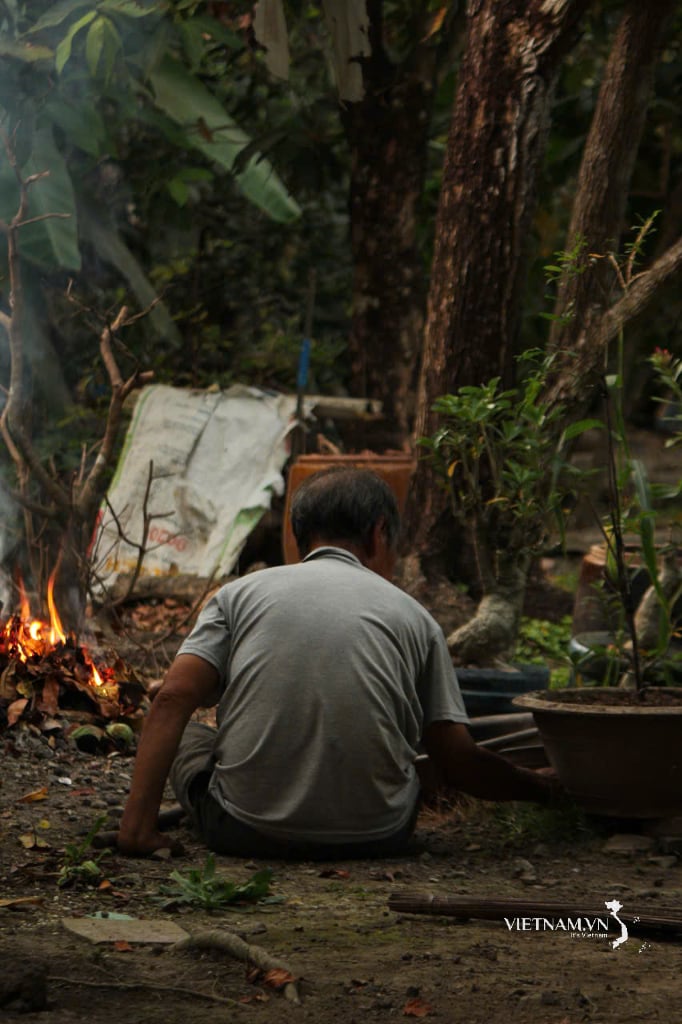According to the latest executive order from US President Donald Trump, the reciprocal tariff on Vietnamese goods has been reduced from 46% to 20%. This is a direct result of lengthy negotiations between the Government and relevant ministries and agencies since the end of April 2025.
The efforts and results of the negotiations received positive feedback from experts, representatives of many industry associations, and businesses. The challenge is that Vietnamese businesses need a proactive strategy and mindset to firmly overcome all challenges and seize opportunities in the new context.
According to economic experts, the 20% retaliatory tariff has somewhat eased the tension among exporters. Following President Donald Trump's executive order adjusting retaliatory tariffs, which reduced the US retaliatory tariff on Vietnamese goods from 46% to 20%, representatives of the Textile, Garment, and Footwear Association offered their initial assessment.
Representatives from the Vietnam Textile and Garment Association (VITAS) stated that the 20% tariff is a general rate applied to Vietnamese goods. However, the textile and garment industry has a wide variety of products, from yarn and fabric to finished clothing. VITAS needs to wait to see the specific tariff rates applied to each type of product and each HS code before it can accurately assess the actual impact on the export activities of each enterprise.
Regarding the 20% tariff on Vietnamese goods, which is higher than the 19% tariff of some Southeast Asian countries such as Thailand, Cambodia, Indonesia, Malaysia, and the Philippines, some textile and garment businesses believe this is a "relatively appropriate" tariff given that Vietnam is the leading Southeast Asian exporter to the US and has the fourth-largest trade deficit with the US.
Earlier, as soon as initial information about the US tax policy emerged, Mr. Vu Duc Giang, Chairman of the Vietnam Textile and Garment Association, stated that in response to the changes, the textile and garment business community remained calm, did not panic, and proactively sought solutions to overcome the difficulties.
Many businesses have made breakthroughs in their working methods and policies for coordinating and sharing internal orders; they are also actively expanding their consumer markets to minimize risks from policy changes of major trading partners.

Garment manufacturing for export to the US market at TAL Vinh Phuc Garment Company. (Photo: Tran Viet/VNA)
Sharing the same perspective on the "don't put all your eggs in one basket" strategy; instead of focusing solely on traditional markets like Europe, the US, and Japan, Ms. Phan Thi Thanh Xuan, Vice President and General Secretary of the Vietnam Leather and Footwear Association, shared that, in addition to consolidating market share in traditional markets such as Europe, the US, and Japan, the association has guided and supported businesses in the industry to expand exports to several markets in South America and the Middle East.
These areas have significant and diverse consumer potential, helping businesses mitigate risks when traditional markets experience fluctuations. Furthermore, businesses are beginning to approach major e-commerce platforms like Alibaba and Amazon to expand their online sales channels and directly reach global consumers.
Despite adjustments, the reality is that not only the US market, but also other major markets such as the European Union (EU) are increasingly imposing stricter requirements on sustainable development, origin of goods, and environmental and social standards. This creates a "double" pressure forcing Vietnamese businesses to constantly innovate and adapt.
A large furniture manufacturing and exporting company in Binh Duong (formerly) stated that, with the 20% retaliatory tariff imposed by the US on Vietnam, Vietnamese furniture exports are not entirely in an overly advantageous position, but neither are they in a disadvantageous one.
The tax rate difference between Vietnam and some other competitors is insignificant. For example, ASEAN countries like Indonesia and Cambodia have tax rates that are 1% lower than Vietnam's.
This difference doesn't have much practical significance in terms of competition. The general level of competition is comparable across countries, so it can be said that the Vietnamese wood industry is not at too much risk from this new tax policy.
Large markets like Japan, South Korea, and Europe – which are subject to taxes at around 15% – differ from Vietnam, but these countries do not create competitive pressure on the Vietnamese wood industry.
Regarding the US's reciprocal tariffs on other countries, the Vietnamese wood industry remains confident in its ability to compete, as it has done in the past. "Basically, the current tariff levels are similar across competitors and affect both producers and consumers. Everyone has to pay a certain amount of tax, and American consumers will also bear a portion of that cost. While there may be some initial difficulties in finding a way to reconcile these tariffs between suppliers, importers, and consumers, in the long run, the market will self-regulate according to the laws of supply and demand. All three parties will share the cost pressure, and the system will reach a new equilibrium," this business analyzed.
Mr. Nguyen Hoang Phuoc, Director of Nam Viet Furniture Manufacturing and Trading Joint Stock Company, an exporter of wood and furniture, shared that the US market currently accounts for over 50% of Vietnam's total wood export turnover. With the new tariffs, American consumer demand will also be affected, as the final product price will increase.
According to Mr. Phuoc, Nam Viet Company is currently interested in and exploring the possibility of exporting wooden furniture to the United States. However, given the newly announced tariff policies, the company remains quite cautious and is only exploring the market and researching local customers to develop a long-term export cooperation strategy.
Therefore, businesses still expect that both sides will continue negotiations to further reduce tariffs in the future, creating favorable conditions for both Vietnamese producers and American consumers.
Source: https://htv.com.vn/thue-doi-ung-20-doanh-nghiep-tim-cach-thich-ung-222250804181102302.htm


![[Image] The tenacious fighting spirit of Vietnamese women's football](/_next/image?url=https%3A%2F%2Fvphoto.vietnam.vn%2Fthumb%2F1200x675%2Fvietnam%2Fresource%2FIMAGE%2F2025%2F12%2F17%2F1765990260956_ndo_br_4224760955870434771-copy-jpg.webp&w=3840&q=75)
![[Image] Leaked images ahead of the 2025 Community Action Awards gala.](/_next/image?url=https%3A%2F%2Fvphoto.vietnam.vn%2Fthumb%2F1200x675%2Fvietnam%2Fresource%2FIMAGE%2F2025%2F12%2F16%2F1765882828720_ndo_br_thiet-ke-chua-co-ten-45-png.webp&w=3840&q=75)
![[Live] 2025 Community Action Awards Gala](/_next/image?url=https%3A%2F%2Fvphoto.vietnam.vn%2Fthumb%2F1200x675%2Fvietnam%2Fresource%2FIMAGE%2F2025%2F12%2F16%2F1765899631650_ndo_tr_z7334013144784-9f9fe10a6d63584c85aff40f2957c250-jpg.webp&w=3840&q=75)
![[Photo] Prime Minister Pham Minh Chinh receives the Governor of Tochigi Province (Japan)](/_next/image?url=https%3A%2F%2Fvphoto.vietnam.vn%2Fthumb%2F1200x675%2Fvietnam%2Fresource%2FIMAGE%2F2025%2F12%2F16%2F1765892133176_dsc-8082-6425-jpg.webp&w=3840&q=75)

![[Photo] Prime Minister Pham Minh Chinh receives Lao Minister of Education and Sports Thongsalith Mangnormek](/_next/image?url=https%3A%2F%2Fvphoto.vietnam.vn%2Fthumb%2F1200x675%2Fvietnam%2Fresource%2FIMAGE%2F2025%2F12%2F16%2F1765876834721_dsc-7519-jpg.webp&w=3840&q=75)
































































![[Live] Closing Ceremony and Award Presentation for the "Impressive Vietnam Tourism" Video/Clip Creation Contest 2025](https://vphoto.vietnam.vn/thumb/402x226/vietnam/resource/IMAGE/2025/12/17/1765974650260_z7273498850699-00d2fd6b0972cb39494cfa2559bf85ac-1765959338756946072104-627-0-1338-1138-crop-1765959347256801551121.jpeg)




















Comment (0)